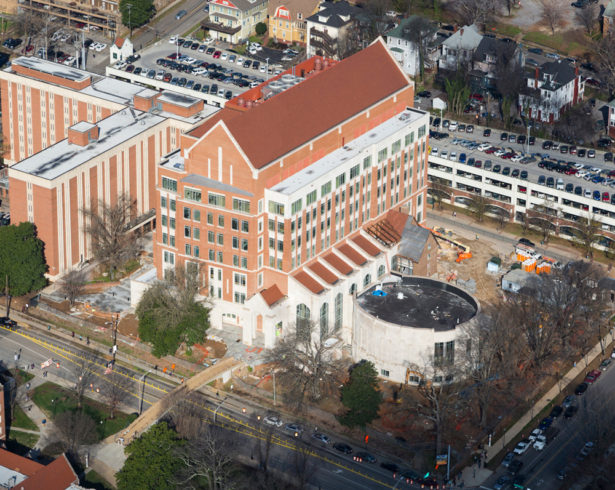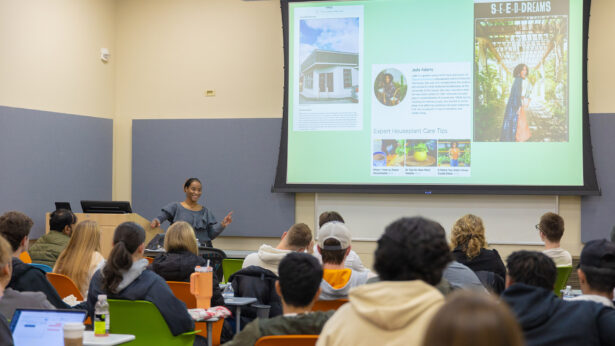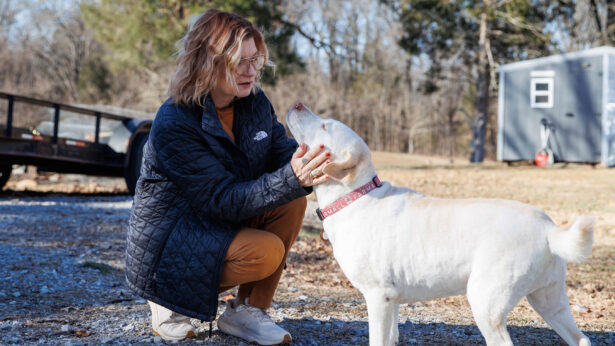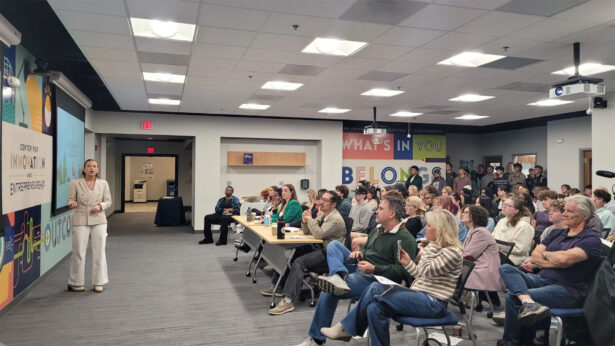Thanks to the participation of 4,223 volunteers—including more than 3,100 students; 700 faculty, staff and retirees; 400 alumni; and one bluetick coonhound—UT Knoxville set the Guinness World Record title for the largest human letter on March 29.
The feat was broadcast live on NBC’s Today show as part of Rokerthon 3, weatherman Al Roker’s week-long trek to five universities to break world records.
Wearing matching orange T-shirts, participants stood side by side to form a Power T that spanned 190 feet by 190 feet, encompassing the majority of Shields-Watkins Field at Neyland Stadium. A Guinness World Records representative announced the official head count and verified UT Knoxville topped the record held previously by Queen’s University in Ontario, Canada. Confetti cannons blasted, and the UT Pep Band launched into “Rocky Top”
as Chancellor Beverly Davenport accepted the Guinness award.
Three Granted Honorary Degrees
An Apollo 17 astronaut, Tennessee’s 48th governor and the founder of HGTV all received honorary degrees from UT Knoxville in May. They were among industry and academic leaders who addressed graduates during a dozen commencement ceremonies on campus.
Astronaut Harrison “Jack” Schmitt, part of the last manned mission to the moon in 1972, received an honorary doctorate in science and humane letters from the College of Arts and Sciences.
Former Tennessee Gov. Phil Bredesen received an honorary doctorate in science and laws at the graduate hooding ceremony. While governor, Bredesen helped establish the UT-Oak Ridge National Laboratory Governor’s Chairs program, now funding 15 world-renowned scholars at UT Knoxville, and formed an interdisciplinary center administering a doctoral program in energy sciences.
Ken Lowe, Scripps Networks Interactive CEO and creator of HGTV, received an honorary doctorate in humane letters at the College of Communication and Information ceremony.
Strong Hall Opens
Strong Hall is now open on Cumberland Avenue.
The 268,000-square-foot, state-of-the-art building features classrooms that encourage interactive learning and support the use of cutting-edge technology. Strong Hall houses the departments of biology, chemistry, anthropology, and Earth and planetary sciences.
Built on the site of the old Sophronia Strong Residence Hall, the new building preserves some of the former building’s features. The front entrance archways are from the old Strong Hall, and one of the old building’s bays has been fully restored on the east side. Original exterior door headstones carved with names of UT’s first five female students were saved to create an exterior rock garden.



